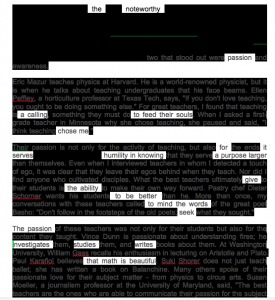A War for Learning
Tilt your eyes up a bit. I am atop my soapbox.
Earlier this week I “met” (virtually) with the TeachersFirst Educator Advisory Board, an energetic and savvy group of educators from primary grade teachers through a teacher-ed prof, with a representative sampling of responsibilities, experience, and geography in the middle. These meetings help TeachersFirst grab a snapshot of what is important to teachers in various locations and situations and what we can do to continue to meet teachers’ professional development and classroom learning needs. This was a particularly spirited meeting with many positive outcomes, but it did leave me with a ponderous, very gray cloud that just will not go away.
I had asked the group to make a pie-in-the-sky prediction about when the day might come when teachers can assume (and expect) ALL U.S. kids to be able to do homework that involves using an online device. In other words, when will all U.S. kids have both Internet access and device access to complete an online homework task outside of class? Why does it matter? Simply because a teacher cannot in good conscience assign anything that places some students at a disadvantage compared to the rest of the class. This is a non-starter. Forget “anywhere, anytime” learning. We don’t even have “somewhere, sometime” learning without such access. And don’t think it is just a few schools that suffer from this problem. It is MOST schools.
The predictions from the group were downright depressing (to me), and this is a very positive group of people:
Even if kids might have smartphones, it’s not good platform for activities like writing. In our lifetime? Doubt it.
Even if they have a device, all the kids in the family share it. All of them do homework on one device?
Living in the country (30 minutes outside a state capitol) and VERY limited Internet choices here (dial up is frequently the ONLY choice). Without govt. requirements, it’s not going to happen. It’s too expensive for providers to make any money when the farms are FAR apart!
I don’t see this happening. Too many children have other responsibilities after school. Also I see far too many families wondering about how they are going to survive (not enough food for family…etc), and they consider online devices a luxury.
There will always be the haves and the have nots. Whether it is technology or something else. I also agree with [name withheld]. It is an issue of the home support and we have issues with that too. At this time I cannot see all teachers being able to expect that.
…assuming that families will have technology is unrealistic when the families bounce around, live in homeless shelters, and struggle to get enough food (cuts in food stamps have made it even more desperate). When I worked in a suburban school, I happened to know several families who were in and out of homeless shelters, but the incidence in urban schools is so much higher.
I cannot see us requiring our students to complete online activities unless the government would somehow fund the internet for all. However, as that is extremely unlikely to occur I don’t really think we’ll ever get to that point.
A few offered a positive end in sight, or at least a glimmer of possibility:
I don’t see that happening. We can’t even expect all of them to do homework now. But stranger things have happened. I remember when the PTA bought our school our first computer and it was for 4 third grade classrooms to share. That was way before internet. WE SURE HAVE COME A LONG WAY… and who knows where it will go next?
While I can’t see that happening, when I started teaching in the early 70s (yes, I am older than dirt) I would never have thought today’s technology would be possible. So who knows?
Yes, I think within less than five years all U.S. teachers will be able to hold students accountable for assignments that need to be completed online and turned in as a digital assignment.
The best thing to come out of the conversation was the brainstorm about what we can DO about it. Teachers are can-do people, so this group came up with:
- SAD days (stay after days) staffed by teacher volunteers so kids could use school computers for 90 minutes after school. This supported respite from home responsibilties is actually a popular event with some teens! (Yes, the transportation issue was discussed. This seems to vary by location/school.)
- Grade level or all-school teacher teams working together to staff extra access times for both kids and parents in the media center or computer lab (recesses, late afternoons, and/or evenings).
- Loaner, cellular-enabled devices — but we immediately realized the cost was prohibitive.
Teachers really are can-do folks, and we will often find ways to beg, borrow, or hijack help. On re-reading the challenges this group cites to universal access, however, I think even the best grassroots effort from teachers is going to need significant assistance from a broader public and policy makers to truly enable anywhere, anytime learning for ALL kids. We had a War on Poverty once. We need a War for Learning.











